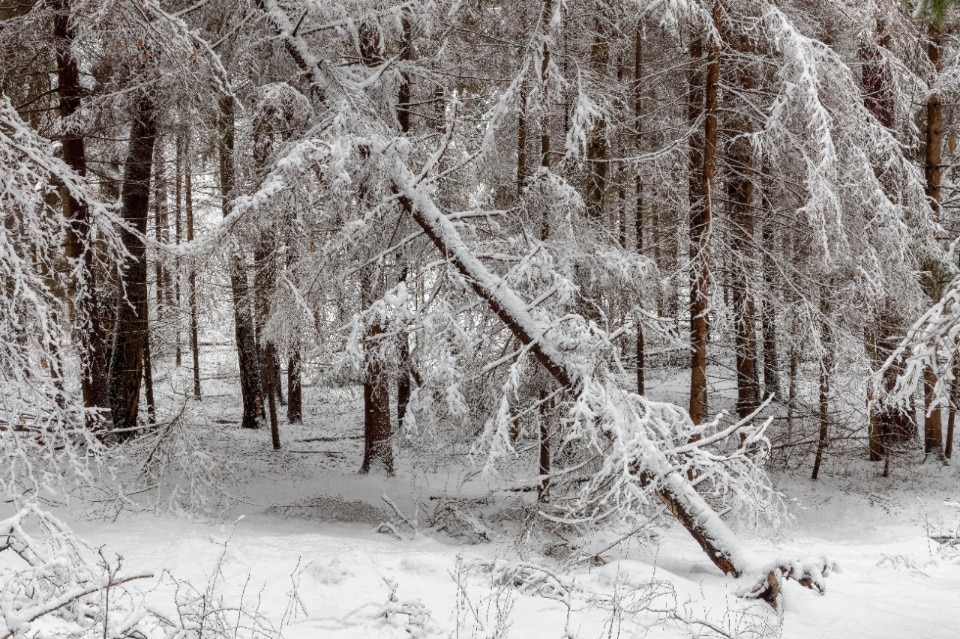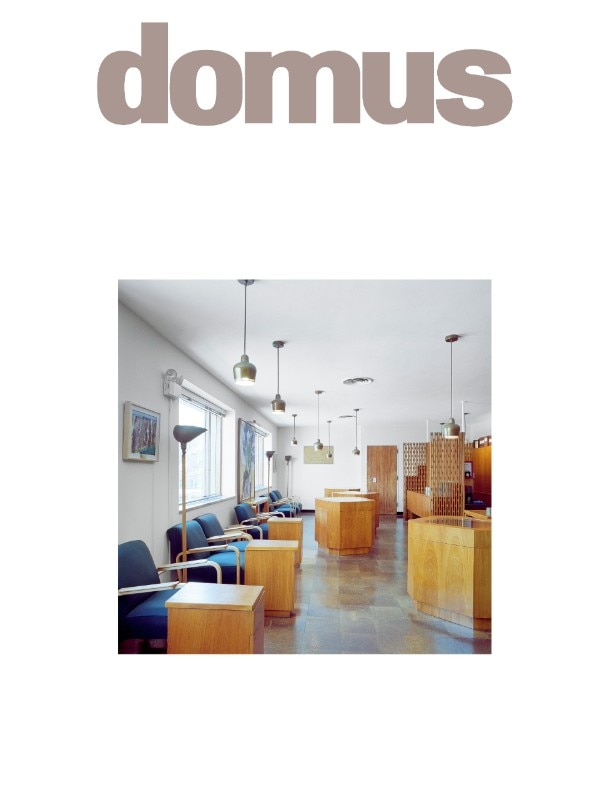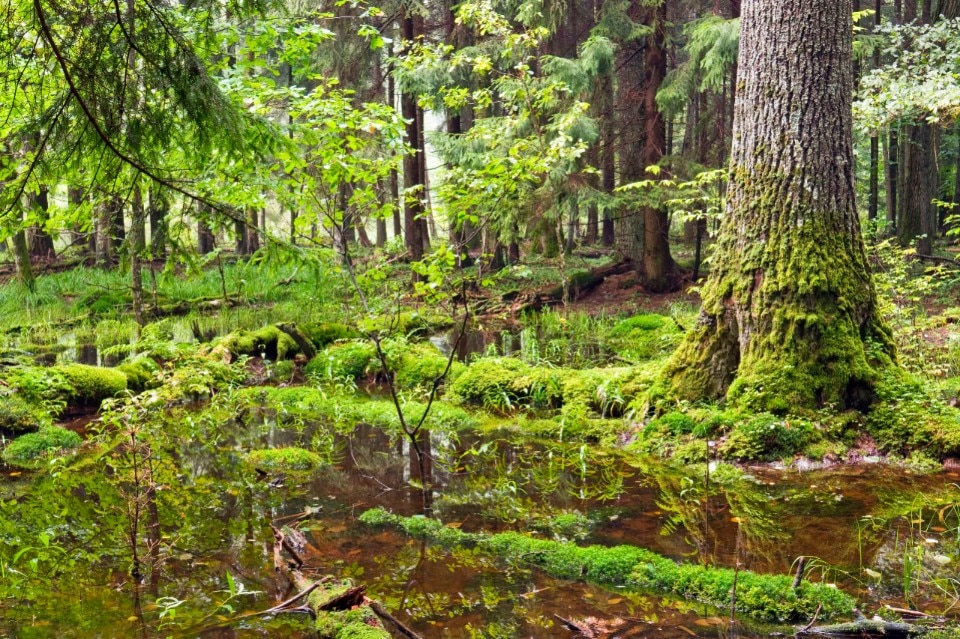“For almost all of the 100,000 years that humanity has existed, nature was our home. In our hearts, in our deepest fears and desires, we are still adapted to it. Ten thousand years after the invention of farms, villages and empires, our spirits still dwell in the ecological motherland of the natural world. We do not and cannot live for long outside of this selfsustaining environment. We exist in a narrow biological niche ultimately dependent on its largesse. The natural world has humbling power and eternal life, so that with good reason we call it Mother Nature.”
Edward O. Wilson, The Origins of Creativity, 2017
I chose the topic of Forest to continue a dialogue with Steven Holl’s first five issues of Domus 2023, which started with The oceanic. His meta-themed issues had us travel through outer space and into the inner worlds of our perception. He set out to consider architecture through its impacts and its relationship to the environment and to humanity, a theme that I wish to continue.
In 2023 we are facing multiple crises: environmental, societal, cultural and economic; we are entering an era marked by an unprecedented confluence of forces both positive and negative. This Forest issue is an introspective interrogation of our relationship with nature and unpacks our connections with natural resources and design. This issue explores beyond banal calculations of the built environment, such as carbon footprints, and ventures further into the symbolic and reciprocal relationship between nature and humanity.
The forest survives not through the survival of the fittest but by communicating among itself, protecting diversity and the next generation of trees of every species.

Living in cities and living with the forest are two sides of the same coin and the only valid currency for a sustainable future. The forest has a larger-than-life presence; it is symbolic and vast with an unfathomable expanse, mirroring the oceanic. The forest has been a witness to historical events and tragedies alike; it is ingrained in the memories of civilisation and continues to exist as a cultural monument. The Białowieża Forest, on the border between Belarus and Poland – near a theatre of contemporary conflict with the war in Ukraine – is embedded with histories of continuous invasion, violence and atrocities upon the European continent. As one of the last surviving primeval forests in Europe, it is a depository of human memory and travesty, described in detail by Simon Schama in Landscape and Memory.
The forest of the Great Dismal Swamp in Virginia and North Carolina became the refuge of Maroons, formerly enslaved people who had escaped and joined the indigenous population of the American South, and who learned the hidden ways of the forest and formed a reciprocal and life-saving relationship with nature. More recently, Richard Powers, the author of The Overstory, wrote a New York Times op-ed titled “What Could Make a Person Die for Trees?” In it, he described the ongoing clash in the South River Forest in Atlanta, Georgia, USA, where the Atlanta Police Foundation intends to build a 34-hectare police training facility, nicknamed Cop City. The forest, and the protests within it, have become the nexus of current sociocultural conflicts focused on inequity, injustice, environmental anxiety, racial tensions and suspicion of the police.
The forest is not only symbolic but vitally alive and communicative. Suzanne Simard, in Finding the Mother Tree: Discovering the Wisdom of the Forest (2021), shows us her journey to her scientific discovery: “One of the first clues came while I was tapping into the messages that the trees were relaying back and forth through a cryptic underground fungal network. When I followed the clandestine path of the conversations, I learned that this network is pervasive through the entire forest floor, connecting all the trees in a constellation of tree hubs and fungal links. A crude map revealed, stunningly, that the biggest, oldest timbers are the sources of fungal connections to regenerating seedlings. Not only that, they connect to all neighbors, young and old, serving as the linchpins for a jungle of threads and synapses and nodes”.
Simard discovered that the chemical signals that trees emit are identical to our own neurotransmitters. It is amazing to contemplate the social nature of the forest and how critical it has been for its evolution and survival. Metaphorically and scientifically, we learn lessons from this stunning discovery and glean clues as to how we may, together, survive as a total ecosystem.
The world is not a simple straight line but a complex jumble of intersected paths that, as architects, we can try to untangle to weave a liveable and sustainable fabric for future generations.

I focus on the forest as the theme of this issue, instead of abstract strategies for mitigating climate change or even our overdependence on “green” technological solutions, to seek out nuanced and subtle approaches to the ways we can design with natural resources and connect our lives back to nature itself. If we do not pursue these paths, we will soon find ourselves further complicit in the climate crisis, isolating our work from the forces that affect lives, societies and civilisations.
The world is not a simple straight line but a complex jumble of intersected paths that, as architects, we can try to untangle to weave a liveable and sustainable fabric for future generations. We cannot continue to evaluate the state of design in terms of isolated buildings and objects represented within a narrow spectrum of culture. We must see the forest for the trees. In this issue, I forage through diverse territories, geographies and cultures to discover otherwise invisible elements – ideas, philosophies, inclinations and attitudes – to re-evaluate our path forward as architects, designers and artists for humanity. We are witnessing a sea change demonstrated by the diverse speculative projects presented within. The shift is in value systems and focus: from space to environment, from individual to community, from objects to systems. As Simard demonstrates, the forest survives not through the survival of the fittest but by communicating among itself, protecting diversity and the next generation of trees of every species. This is the idea behind the remaining five issues in the guest-editorship of Domus 2023. I would like to pick up voices of awareness, alertness, warnings and insights; voices that will inform our paths forward so that we may once again start to think of ourselves as part of a complex whole, exemplified by the communities of the forest.
Immagine di apertura: Parco nazionale Białowieża, Polonia. Photo Lydie Gigerichova / Alamy Photo Stock


